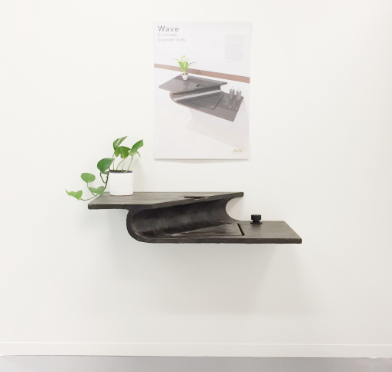“Don’t just pass.
Work to be, demonstrably, the most hireable graduate in your year.”
– SIMON LOCKWOOD
Introducing our 2020 graduate, Mr Simon Lockwood. Having joined us in 2018 with a desire to learn, practice and master the skills of product design, Simon's creative journey at TAFE was an epic adventure. Over the course of his studies, Simon has produced a diverse portfolio of work, showcasing his dexterity as both a designer and engineer.
Tell us a little about your experiences since. Where have you worked? Where do you work now?
I had started Nudi Design as an industrial design consultancy during my Advanced Diploma and have been with it since.
How did you get your first design job or solo exhibition?
Via contacts from my life before TAFE
What advice would you give to current Art & Design students studying at NM TAFE right now?
This is aimed at students who are studying to get a job, a commission, an exhibition or in some way or other be paid semi-regularly for their work in the field.
You have resources, materials, tools and knowledgeable mentors available to you at TAFE that give you opportunities you will likely never get again in your life. Use them! Annoy your lecturers with questions. Drive the support staff nuts by waiting for them at the workshop doors in the morning or making them kick you out when you want to go home. Ask questions, ask for hands on experience of every technique, tool and material you can possibly squeeze in to your time there.
Don't work to just pass. Work towards being, demonstrably, the most hireable graduate from your year. Be that person who stops prospective industry people wandering through the grad show because they see something outstanding and useful to them.
If you want a job doing what you're studying, remember: your prospective employer needs to *want* what you are making. What you want/think/feel about the world and any urge you have to self express is largely irrelevant or even destructive in the context of seeking employment. Use it as a source of ideas, sure, but your final output needs to fit within the viewer's tastes if you'd like to someday get paid.
What can Perth and Western Australia do to support graduating diverse range of Art & Design students more?
In Product design, local industry is a driving force and in Perth is largely unaware of product design as a profession. Promoting that awareness and the benefits of engaging professional designers rather than leaving it to the engineers seems like a great step in developing a market for new graduates.
It would be fantastic if we had an industry body who actually promoted product design within industry here. The Design Institute of Australia has proclaimed themselves the peak group for product design in Australia but they seem strongly focussed on architecture/interiors and their efforts are heavily weighted on the east coast.
What do you think are the most important qualities in an emerging designer or artist?
Empathy. Not designing for yourself is difficult but essential, and getting into the headspace of your market is the first step for better understanding the problem you're trying to solve and in helping find appropriate concepts to solve it.
Honesty & openness. Work collaboratively with your clients. Share the ups and downs as you progress through projects.
Curiosity. Inspiration for your work will often come from new ideas and experiences that you see. Keep learning, keep abreast of the latest trends and technologies. Get out of the office and experience a little of the world, as often as you can. The way that tree stump throws a shadow on that rock may just stick in your mind to make you the next Phillipe Starck.
Please list some awesome new developments happening right now in the Art & Design industry that you are excited by.
We live in an exciting time where all kinds of technology, materials and tools are being developed faster and faster. Part of being an effective product designer is staying abreast of what's new and being able to incorporate that bleeding edge into new designs for clients.
In particular we're exploring and using:
CNC machining for tough, precise parts.
Additive manufacturing for fast turnaround of prototype iterations and mould making.
3D scanning & photogrammetry to provide context for our designs and feed into more realistic concept renders.
AI as a tool for documentation, to help with coding and to generate large image pools during ideation of new designs.
Electronics and programming. So many products these days incorporate some kind of "smart" behaviour. Being able to incorporate this into prototypes is almost mandatory for a lot of the work we do.

![[image] - 3259356.jpeg](https://images.squarespace-cdn.com/content/v1/63d8b5f93be39d2b35c82dd4/cbf84fa6-3bc4-403e-bfe8-de239a1e5027/%5Bimage%5D+-+3259356.jpeg)
![[image] - 7583099.jpeg](https://images.squarespace-cdn.com/content/v1/63d8b5f93be39d2b35c82dd4/65b6226a-204d-4e92-8b0c-f2d9d9ae532f/%5Bimage%5D+-+7583099.jpeg)
![[image] - 6341346.jpeg](https://images.squarespace-cdn.com/content/v1/63d8b5f93be39d2b35c82dd4/b5c0aae3-6503-4ada-ac4a-3d7dfcce5319/%5Bimage%5D+-+6341346.jpeg)

